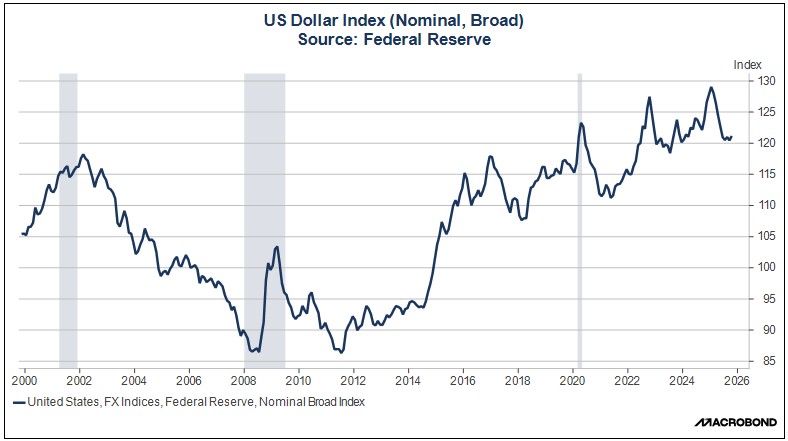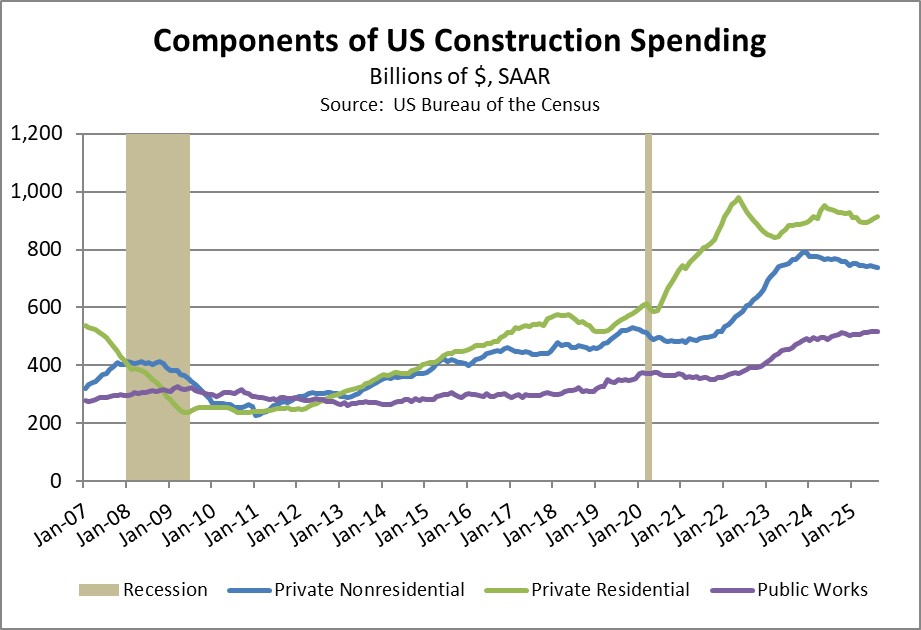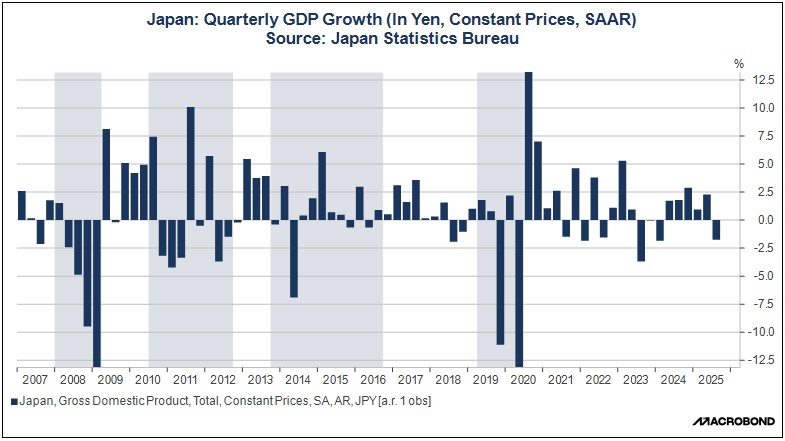by Patrick Fearon-Hernandez, CFA, and Thomas Wash
[Posted: 9:30 AM ET] | PDF
Our Comment today opens with a sudden shift in the US’s proposed new peace deal to end the war in Ukraine. We next review several other international and US developments with the potential to affect the financial markets today, including a statement by another influential Federal Reserve policymaker supporting a further interest rate cut in December and new Chinese economic retaliation against Japan for Prime Minister Takaichi’s recent comments suggesting Japan would intervene militarily against a Chinese blockade of Taiwan.
United States-Russia-Ukraine: Press reports last night said US and Ukrainian negotiators have reached a tentative 19-point peace deal to end Russia’s invasion of Ukraine, intending it to replace last week’s 28-point, Russian-inspired proposal. The reports say several points from the original proposal have been left for President Trump and Ukrainian President Zelensky to hash out. Nevertheless, the revised plan is much more palatable to the Ukrainians, confirming our view that the original plan was likely a non-starter.
- Now, however, the question is whether the Russians will find the revised proposal acceptable. The Financial Times today reports that Russian Foreign Minister Lavrov has already complained that the revised plan overrides “key understandings” that President Putin believed that he had reached with President Trump.
- If the Russians do reject the revised plan, as they have rejected previous proposals that didn’t meet their maximalist goals, it seems likely that the war will continue.
United States-European Union: US Commerce Secretary Lutnick said on a visit to Brussels yesterday that the EU must relax its digital commerce regulations before the US would consider lowering its 50% import tariffs on EU steel and aluminum. The statement is consistent with the US administration’s longstanding effort to increase business for its allies in the technology sector.
United States-Venezuela: President Trump yesterday reportedly told his advisors that he is planning to talk directly with Venezuelan President Maduro, even as the State Department designated Maduro as the head of a terrorist organization, and even as the US continues its big military buildup off Venezuela’s coast. Trump’s statement suggests that any attack on Venezuela to force Maduro from power isn’t necessarily imminent.
US Monetary Policy: San Francisco FRB President Daly yesterday said she supports cutting the benchmark fed funds interest rate again at the Fed’s policy meeting early next month, citing her fear that weakened labor demand is more likely than worsening price inflation. Daly doesn’t sit on the policymaking committee this year, but she usually reflects the views of Chair Powell. Her statement, therefore, will likely help raise expectations for a new rate cut in December. Per futures trading, investors now see an 85% chance of a rate cut at the meeting.
US Fiscal Policy: Faced with White House plans to extend the Affordable Care Act’s enhanced tax credits for two years in return for tighter eligibility rules, which we flagged in our Comment yesterday, House Speaker Johnson has warned the administration that most Republicans in his chamber wouldn’t support the move. Even though the White House wants to avoid spiking health insurance premiums once the current subsidies expire at the end of the year, Johnson’s warning shows that extending the subsidies will be a political challenge.
US Artificial Intelligence Industry: OpenAI CEO Sam Altman has reportedly told company staffers to brace for “rough vibes” and “temporary economic headwinds” as the company suddenly faces an intense challenge from Google’s latest AI program, Gemini 3. Analysts, users, and industry insiders say Gemini 3’s superior benchmarks, integration into Google’s ecosystem, and cost efficiencies are poised to help it grab market share from OpenAI’s Chat-GPT, especially after the underwhelming August release of GPT-5.
US Travel Industry: In its annual pre-Thanksgiving projections, AAA said 81.8 million US residents will travel at least 50 miles from home from November 25 to December 1, up from just over 80.0 million last year. According to AAA’s forecast, 73 million people, or about 90% of Thanksgiving travelers, are expected to travel by car. The good growth in travelers is a reflection of continued economic expansion, which we expect to keep supporting stock values in 2026.
China-Japan: Reports today say the Chinese government has told the country’s airlines to cut their flights to Japan through March 2026. Beijing had already warned its citizens against travel to Japan and taken other measures to retaliate for Prime Minister Takaichi’s recent comments suggesting Japan would intervene militarily against a Chinese effort to blockade Taiwan. The prolonged flight cuts are being taken as a signal that Beijing is bracing for a protracted spat between the two nations, which could potentially weigh on Japan’s economy and stocks.
Global Demographics: According to new research by the European Bank for Reconstruction and Development (EBRD), falling birthrates and shrinking workforces will reduce per-capita gross domestic product in Eastern Europe and the Caucasus by about 0.4% per year between 2025 and 2050. The expected hit to per-capita GDP is expected to be even greater in South Korea, at 1.7%, Italy and Spain, at 0.7%, and 0.6% in Japan and China.
- The EBRD research echoes a study earlier this year by the Organization for Economic Cooperation and Development.
- Both studies show how low birth rates and population aging are putting upward pressure on government budget deficits and debt. However, the studies suggest that politically powerful older people are resisting efforts to tackle the fiscal fallout, such as raising retirement ages, cutting social spending, and allowing more migration.
- As a result, the demographic pressures are likely to keep pushing government debt loads higher in key developed and emerging countries alike, raising the risk of eventual debt crises.
The Daily Comment will go on hiatus beginning Wednesday, November 26, and will return on Monday, December 1. Confluence wishes everyone a Happy Thanksgiving!





